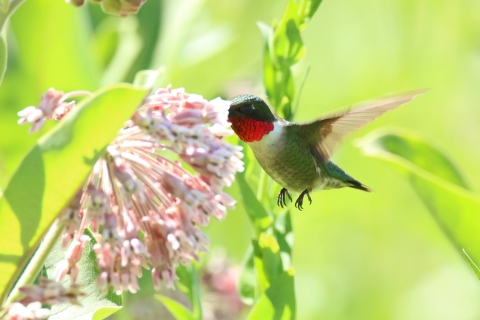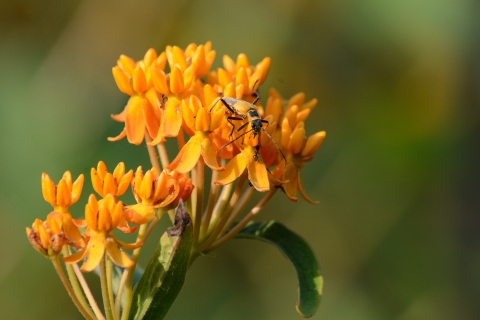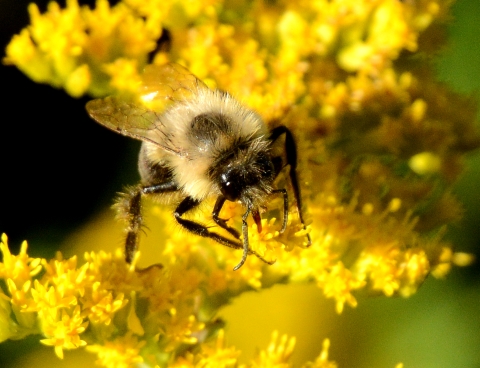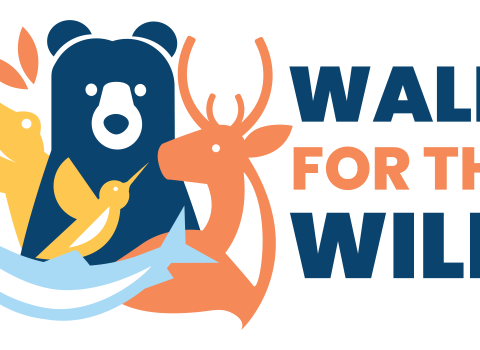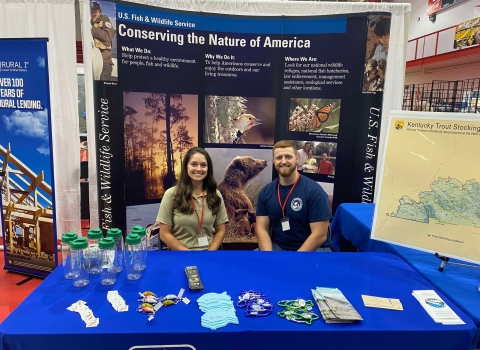What is a pollinator?
A pollinator can be a bee, beetle, ant, wasp, butterfly, moth, hummingbird, bat or even a small mammal. These creatures assist a vital life stage for all flowering plants - something essential for healthy ecosystems. Pollinator Week is an annual event in late June that is celebrated internationally in support of pollinator health. It's the perfect time to raise awareness about the importance of pollinators and the challenges they face, though protecting pollinators is essential no matter the season.
What’s the problem?
Pollinator populations have been declining, and that’s bad news for us and the ecosystem. Without pollinators, many of the foods, beverages, fibers, spices and medicines we use daily wouldn’t be possible. You can help by reducing your impact, planting for pollinators, and spreading the word!
Reducing your impact
The most immediate way to help pollinators is to reduce your impact. Pesticides can be deadly to pollinators of all kinds. Think twice before using pesticides - are the pests you’re trying to remove worth removing essential pollinators as well? If you must use a pesticide, consider an organic alternative or apply the treatment when pollinators are less active.
Another way to reduce your impact to pollinators is to increase your green space. More plants and less pavement means pollinators will have more habitat. If you can have less grass and more garden that’s even better!
Planting for pollinators
An ongoing way to enjoy pollinators and all the work they do is to plant a pollinator-friendly garden. Just like everything else, pollinators need food, water and shelter to survive. You can help provide these essentials by planting a wide variety of plants that bloom from early spring into late fall. Be thoughtful when planting and remember that clumps of plants will be easier for pollinators to find than single plants.
Focus your plant choice on native and non- invasive species invasive species
An invasive species is any plant or animal that has spread or been introduced into a new area where they are, or could, cause harm to the environment, economy, or human, animal, or plant health. Their unwelcome presence can destroy ecosystems and cost millions of dollars.
Learn more about invasive species . Hybrid species should be avoided because they are often lacking the nectar, pollen and fragrance that a natural flower would have. If a plant claims doubled flowers, it’s a hybrid.
If you like seeing beautiful butterflies, consider adding the plants that caterpillars need as well. Remember that providing a home for caterpillars means having plants that will be eaten. Keep this in mind and place caterpillar host plants accordingly so they aren’t too visually prominent. While some of these host plants may be less beautiful, they will provide essential habitat and allow you to watch the butterfly lifecycle right in your own yard!
Spreading the word
Now that you know how to help pollinators, help others by spreading the word! Together we can improve pollinator habitat, rebuild populations and raise awareness for these essential species. Talk to your friends, neighbors and family and share online with your friends around the globe!
Quick facts
- Without pollinators we wouldn’t have many of the foods, beverages, fibers, spices and medicines we use daily
- You can help pollinators by planting a garden to provide flowers from spring to fall and avoiding pesticide use or exploring organic alternatives
- In tropical and desert climates, bats are important pollinators - more than 300 types of fruit need bats
- Butterflies and moths can help spread pollen, but they don’t have any specialized structures for collecting pollen
- Hummingbirds are key in wildflower pollination, especially varieties with tubular shapes, bright colors and deep nectar
- Beetles pollinate more than 80% of all flowers - clusters of flowers are ideal because beetles are clumsy fliers


